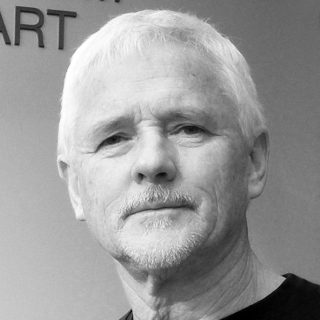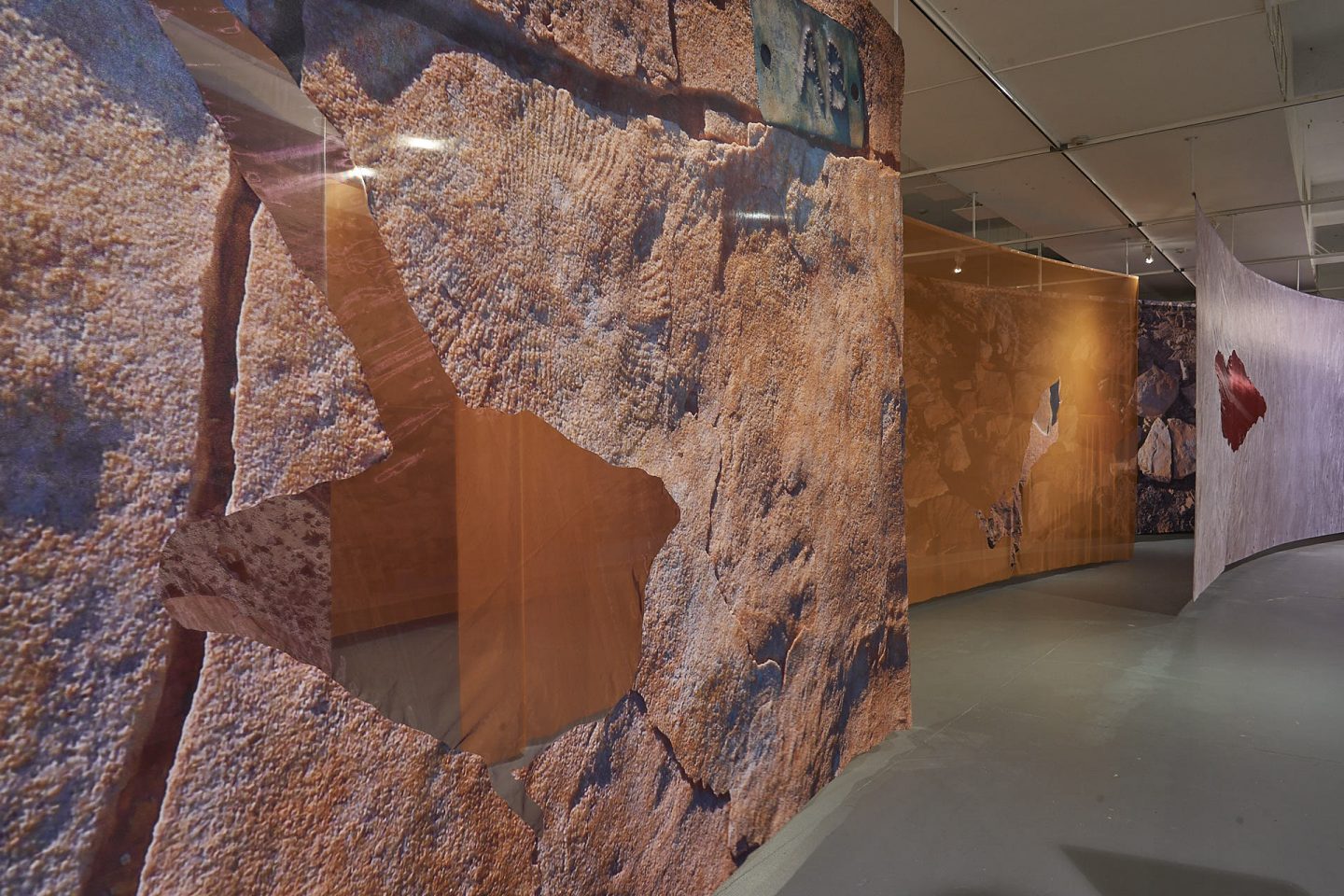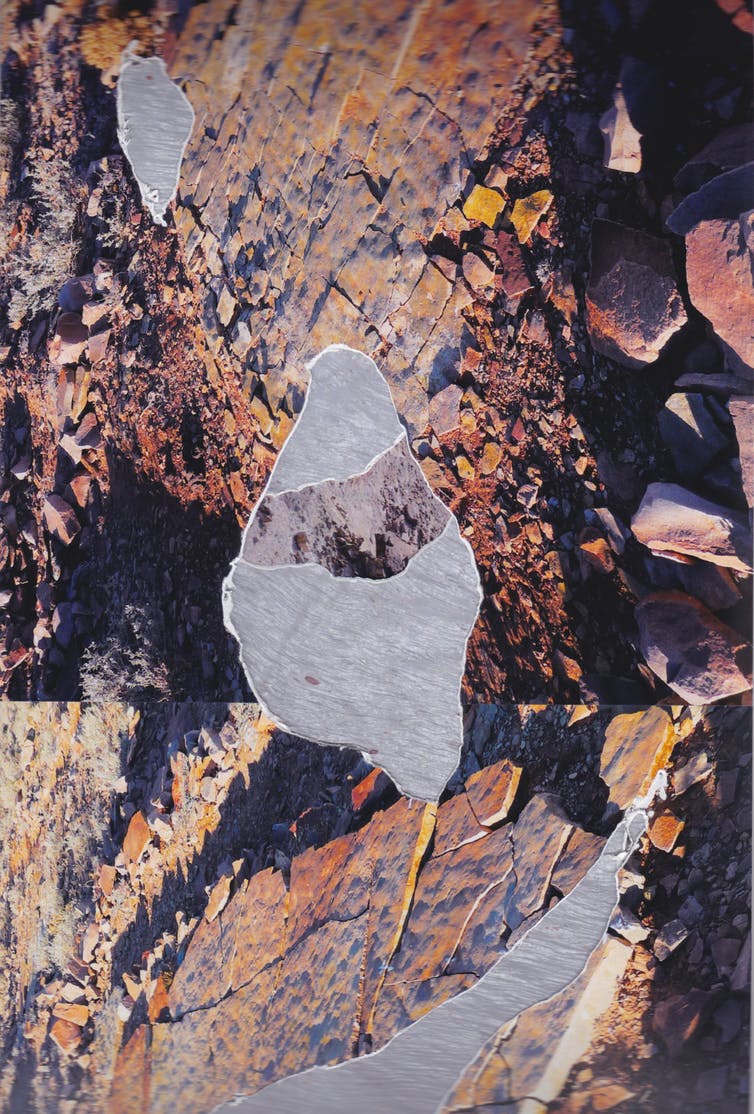
John Neylon
John Neylon is an award-winning art critic and the author of several books on South Australian artists including Hans Heysen: Into The Light (2004), Aldo Iacobelli: I love painting (2006), and Robert Hannaford: Natural Eye (2007).

Tiny, ancient fossilised organisms at the centre of this exhibition deserve time and reflection as possibly the first, the only, true inhabitants of the Garden of Eden.
If we were stones we’d clatter, groan, rumble and chink rather than use words. Replaying Life’s Tape reminds us, things might have turned out differently. Professor Brian Cox talks about the Goldilocks factor of the sun – the just- right balance of warmth, light, darkness, tilt of the earth’s axis, precipitation and there you have the ingredients for a self- contained system capable of incubating and sustaining advanced life forms. At any time along the journey from single- celled organisms to us, any number of forks in the road or cul-de-sacs would have consigned humanity’s hopes of a rather excellent adventure to the scrap heap. Replaying Life’s Tape functions within this speculative space.
The project is the result of a research trip made in 2018 by the Berlin/ Mexico City–based artist Mariana Castillo Deball, to an internationally significant fossil site at Nilpena, in the Ediacara Hills of the Flinders Ranges. The geologist Reg Sprigg first made his discovery of a group of fossils at this site that redefined the evolutionary narrative of life on earth in 1946. A new geological age, the Ediacaran Period (635–541 million years ago) was named for the site. Castillo Deball was attracted to it on the basis of its significance as a testing ground for scientific theories and knowledge about something known as a ‘Tree of Life’. In the field of evolutionary biology this ‘tree’, which traces relationships between groups of organisms (OK, so technically it’s a phylogenetic tree) is a very useful road map for charting a course through fields of research which compares and analyses fossil records from across the globe. But the question remains how, or even if, the Ediacarans are the central link between single-celled and vertebrate creatures. Inquiry is at the heart of Castillo Deball’s practice. From her perspective, the various disciplines of science, archaeology, palaeontology and art overlap in describing the world we live in.
These fossils’ survival and capacity to still sing their song is a little miracle. To appreciate this within the vastness of the Flinders Ranges and the South Australian inland beyond (poetically invoked in Jacinta Koolmatrie’s catalogue essay) adds to this sense of holding a grain of sand and gazing at eternity.

The majority of the installation is composed of large textile panels on which are printed panoramic Nilpena views and close-ups of rock faces and fossils. To enhance the macro/micro dynamic, some panoramic panels are penetrated by see-through enlargements of fossils and rock textures. Add to this a sense of being enveloped through the action of curved panels creating narrow canyons leading to fissure-like dead ends and the disorientation created by inverting a rock escarpment. By such means a viewer is ‘taken there’. Not so the starchy diagrams on billowing white cloth in the adjoining space. Here the probity and exactitude of science exudes the aftertaste of half- forgotten diagrams in school textbooks.
Perhaps that is the tactic – deliberately drive a wedge between the materiality of the site, with all of its complexities and allusive imperial evidence, and the imprimatur of the diagram and its demands for certitude.
An art-sanctioned project which critiques scientific systems associated with museology is a good fit for Adelaide, which has a strong tradition of artists working with and within institutions including the SA Museum, Botanic Gardens and university collections. This ‘fit’ includes the capacity of essentially ‘art’ to amplify knowledge and engage public audiences with a diversity of considerations which go beyond the needs of scientists to analyse and classify. This is one exhibition where I would have to say – read the book (that accompanies the exhibition). Mihnea Mircan’s essay Unthroplogy offers lucid and fascinating insights into the complexities and issues associated with constructing scientific hypotheses. It provides a clear idea of why Castillo Deball is drawn to the subject and wants to reference the modes of scientific display and graphic illustration. Mircan unpacks the various strategies employed by Castillo Deball, such as replicating the fieldwork methodology by use of close-ups, jump cuts, juxtapositions, frottage, inversions and so on. On this basis the installation acts as a visual metaphor for not only site methodology but also the sifting and sorting of evidence. Mircan refers to Castillo Deball’s engagement with the Ediacaran afterlife through a twisting and piercing of the panoramic screens – undoing “their stasis in a sequence of ‘edits’, cuts, fades and dissolves … seeking the creaturely in the lithic and the lively in the stone”.
Back to the Tree of Life. Gabriela Aguileta’s essay Tree Thinking suggests that, given the fact that scientists cannot agree to what extent the Ediacaran species gave rise to the ancestors of today’s species. Replaying Life’s Tape is a reflective experience. The installation’s visual resemblance to panoramic installations commonly found in interpretive centres, airports and convention displays may confuse. But persevere. These tiny, delicate, ancestral life forms were the first complex multicellular organisms on earth. They thrived, as Aguileta tells us, for millions of years in a world to themselves with no or few predators, “truly a Garden of Eden”. Anthropocenes, facing an uncertain future, are entitled to be envious.

John Neylon is an award-winning art critic and the author of several books on South Australian artists including Hans Heysen: Into The Light (2004), Aldo Iacobelli: I love painting (2006), and Robert Hannaford: Natural Eye (2007).